
A big part of why I had traveled to Germany’s Baltic Coast was to visit the small village of Zirchow. And the entire reason I wanted to visit the small village of Zirchow was to go to Hangar 10, a museum which houses a unique collection of rare aircraft.
Figuring out local public transport whilst traveling can be challenging, but I thought I had everything sorted for my short bus journey from Ahlbeck to Zirchow. Turns out I didn’t. I stood at the bus stop and watched my bus, scheduled to pluck me from the pavement in plenty time to reach Hangar 10 by opening time, take a turn down a side street and disappear. I checked the timetable, and it was another hour and a half before I would have the chance to miss the next one. I called a cab.
Arriving at Hangar 10, the staff member and I exchanged mimes, I paid my 10 euros, and in I went. The hangar itself was spotless, and contained nine aircraft that looked as though they had just rolled off the production line. You see, the remarkable thing about the Hangar 10 collection is that they all still fly. Now considering the youngest plane in the museum is 70 years old, and the oldest 85, that’s pretty amazing.
The majority of the collection are German aircraft from the Nationalist Socialist era, 1933 to 1945. The first aircraft on display was this impressive Focke-Wulf Fw-190 A-8. The Museum information states that the aircraft was built in 1944 and flew with the Luftwaffe’s Fighter Wing 1 in East Prussia.
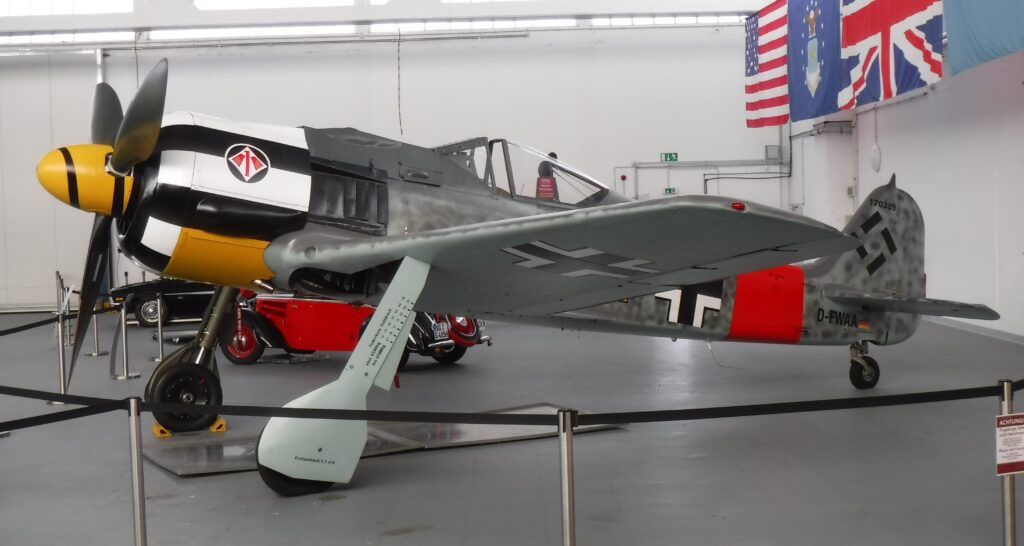
The information panel for the Focke-Wulf stated: ‘The original nameplate of our machine was next to many original parts from the FW 190 used for the reconstruction. Due to the good document situation, the aviation authority approved this project as a reconstruction’ (more on definitions a little later). The aircraft flew again in 2019.
Displaying the swastika in Germany is a fraught issue. Whilst not illegal to show the symbol in museums, it would be likely frowned upon if aircraft wearing the marking are still out flying in the public eye.. Hangar 10 seems to have sidestepped the controversy by using a ‘part swastika’ on their Luftwaffe aircraft.
Beside the Focke-Wulf was a 1937 Fieseler Fi-156 D-2 Storch, an aircraft designed for short take off and landing capabilities. The Museum had footage of the Storch in flight over the aerodrome, and upon landing, it looked like the pilot practically plunked the aircraft down on the spot.

That’a a DKW F8 under the nose of the Storch, which fitted nicely into the era of the aircraft on display.
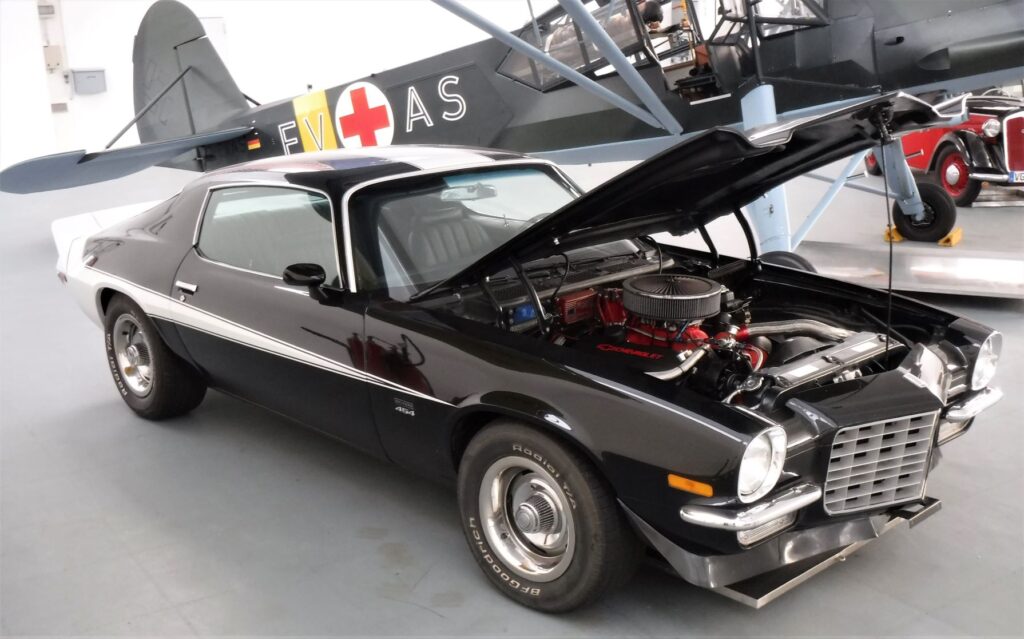
Conversely, on the other side of the Storch was this early 70’s Chevrolet Camaro, which although a very tidy example, seemed a little out of place.
Bet no-one expected that
Hangar 10 included two beautifully presented Bücker aircraft: a 1937 Jungmeister Bü-133 C and a 1939 Jungmann Bü-131 J.
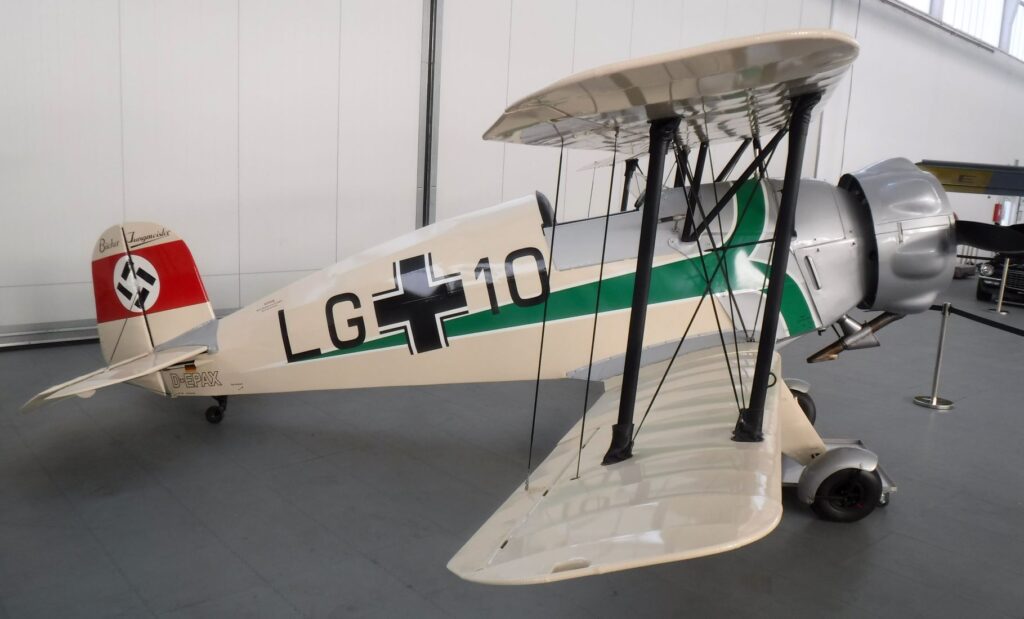
The 131 Jungmann was apparently the first aircraft produced by the Bücker Flugzeugbau (‘Aircraft Construction’), and was designed by a Swedish bloke called Anders Anderson (whose son was presumably called AndersonAnderson, but that’s arguably a little off-topic). Both Bückers were used primarily as training aircraft.
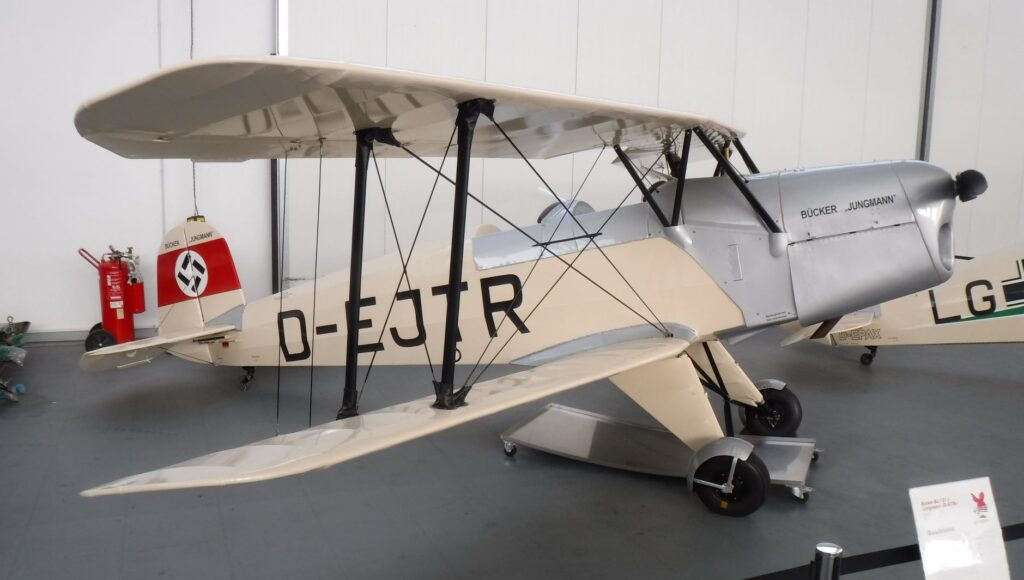
The collection included a third bi-plane: a 1952 Polikarpov Po-2 CSS-11. The Museum explained that production of this Russian aircraft began in 1930, and the type was still in use by Eastern Bloc countries into the 1970s.
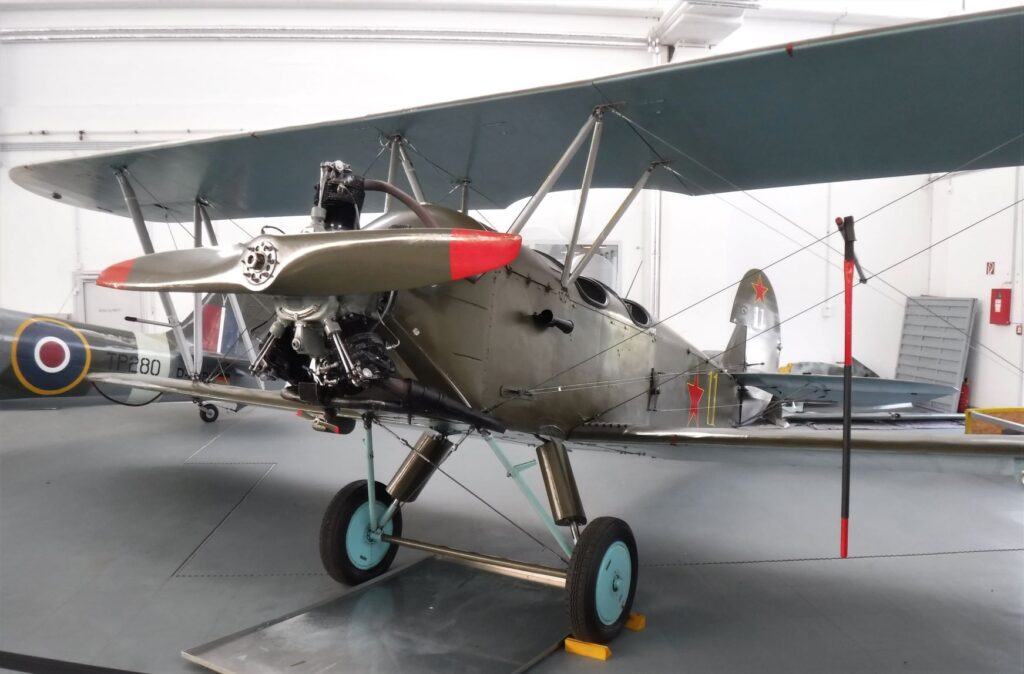
An impressive trio of Messerschmitts was on display in the middle of the hangar. According to the Museum datasheet, this Bf-109 G-14 was built in 1944. It looks remarkably good for its age, and there’s a reason for that. Hey I’m no expert, but it seems to me that the world of historic aircraft preservation is not without controversy. It’s in part due to the ‘grandfather’s axe’ dilemma: if you’ve had the handle replaced a couple of times and just put a new blade on, is it still grandpa’s original old wood cutter?
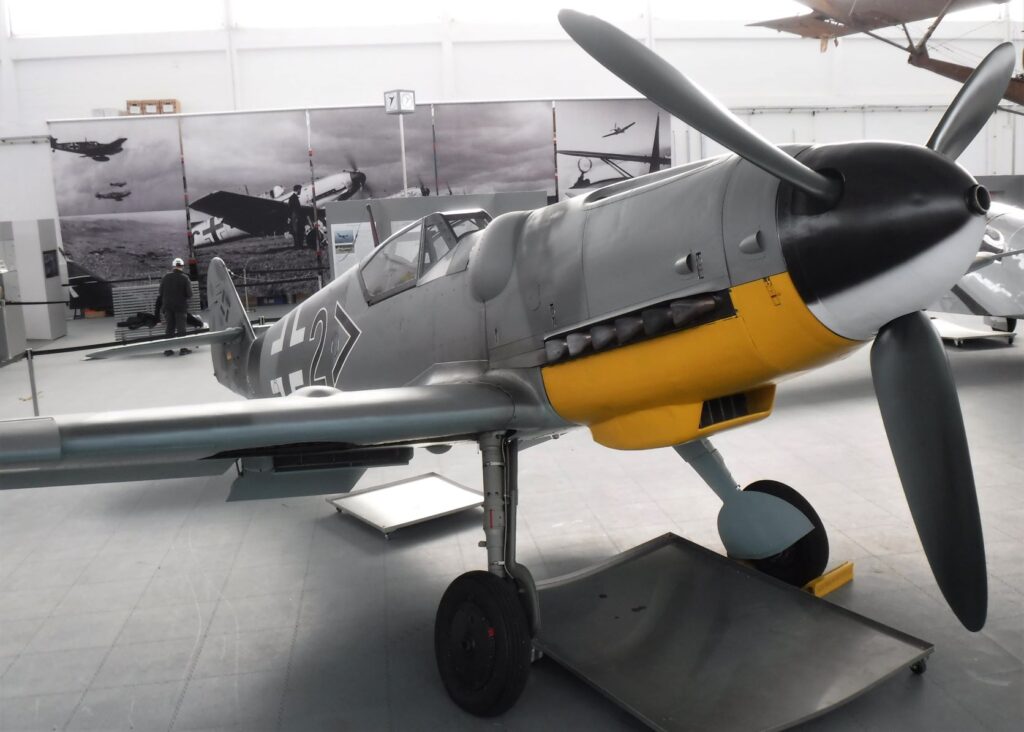
If you happen to find a complete, airworthy historic aircraft under a tarp in the back shed, well then it’s pretty straightforward: you’ve got the original real deal. However, considering the vast majority of wartime aircraft from the 1930s/40s were either destroyed during hostilities or scrapped thereafter, finding original, intact machines is very rare indeed. Consequently, many aircraft from that era that are displayed and/or flown today are composites of surviving parts put together to make the whole. And this is where the debates and definitions come in.
The International Group for Historic Aircraft Recovery (TIGHAR), provides a useful ‘Guide to Aviation Historic Preservation Terminology’1. They define a ‘restoration’ as: ‘Returning the existing fabric of an object to a known earlier state with minimal introduction of new material‘. Compare this to a ‘reconstruction’: ‘Returning an object to a known earlier state by means of repair of the existing fabric and, to a substantial degree, its replacement with new materials‘. Thus, as noted earlier. the Fw-190 shown above is considered a reconstruction.
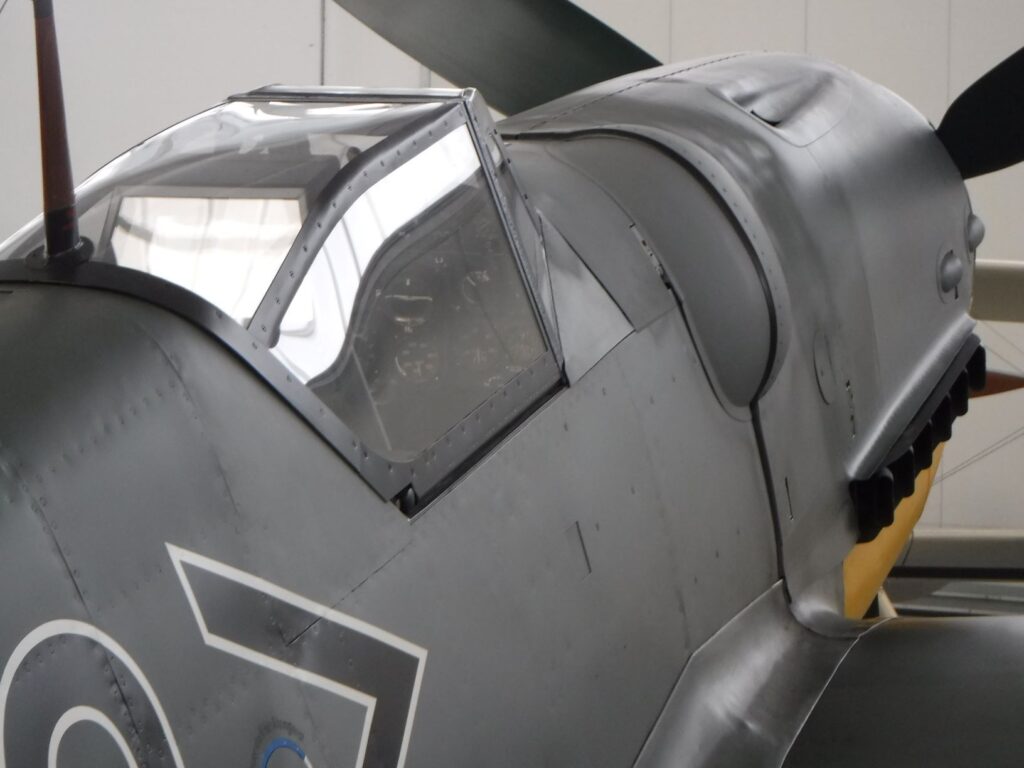
But what of Hangar 10’s Bf-109 G-14? Resto, reco or something else again? I did a little online research and found some interesting information on the aircraft. First up, the plane’s for sale2. No price is listed from the seller, so I guess it’s a case of ‘if you’re asking, you can’t afford it’. Secondly, there are people out there that would classify this 109 as a ‘replica’ (returning the TIGHAR, that’s: ‘An object constructed to represent, to a greater or lesser degree of accuracy, an object which existed at some previous time‘) or a ‘new-build‘3. One source stated ‘…mainly the restored tail area of the WNr. 462707 was used to give it an identity‘, although ‘Many other original parts from other machines were used‘4. So when the broker spruiks the aircraft with the hook ‘Own a piece of German history2‘, well, maybe ‘pieces of German history’ would be more accurate. Now I know you can’t take everything you read on the web as gospel, but it’s food for thought, isn’t it?
When all is said and done, and the antique warbirds have come home to roost, as long as the companies doing the restoring/reconstructing/etc are open and honest, along with those selling or displaying the planes, then we can all make our minds up about how legitimately ‘historic’ a particular machine is to us. Geez, got on a bit of a tangent there…anyway, let’s get back to the Museum.
Along with the controversial Bf-109 G-14, Hangar 10 houses a Bf-109 G-6.
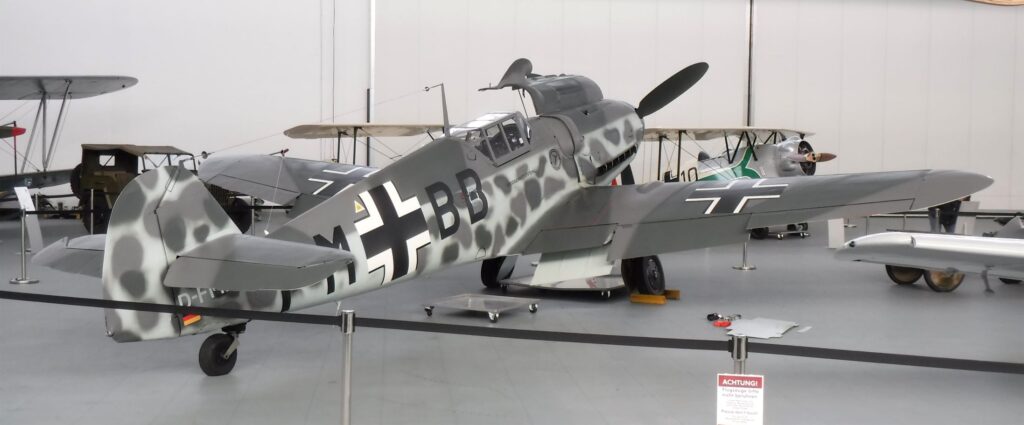
In actual fact, this machine did not begin its life as a Luftwaffe aircraft. In fact, it didn’t start its life as a Bf-109 G-6 at all. The Museum information states that the plane is actually a Hispano Aviacon H.A. 1112 M-1-L, a version of the Messerschmitt built under licence in Spain, which has been converted to G-6 specifications.
Rounding out Hangar 10’s trio of Messerschmitts is this 1942 Bf-108 B, which after restoration arrived at the Museum in 2016.
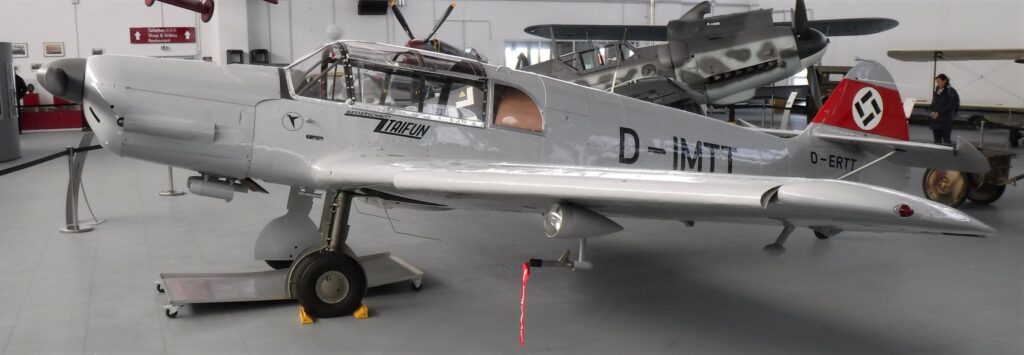
Standing near the exit of the exhibition hangar is this stunning 1945 Mk XVIII Spitfire.
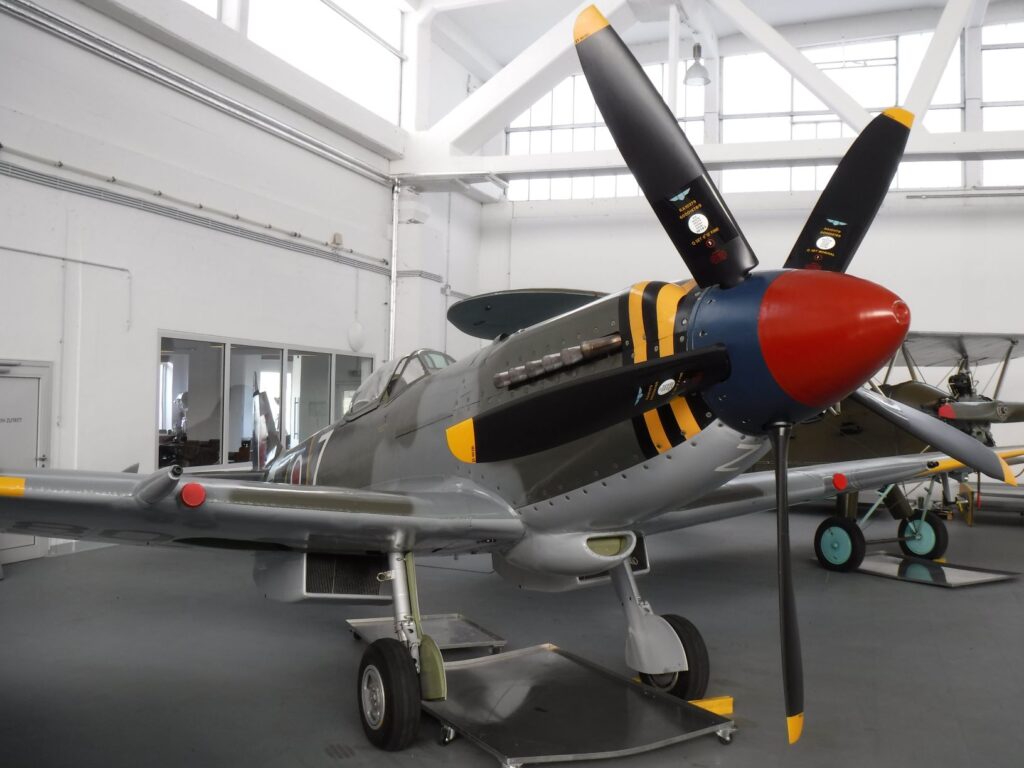
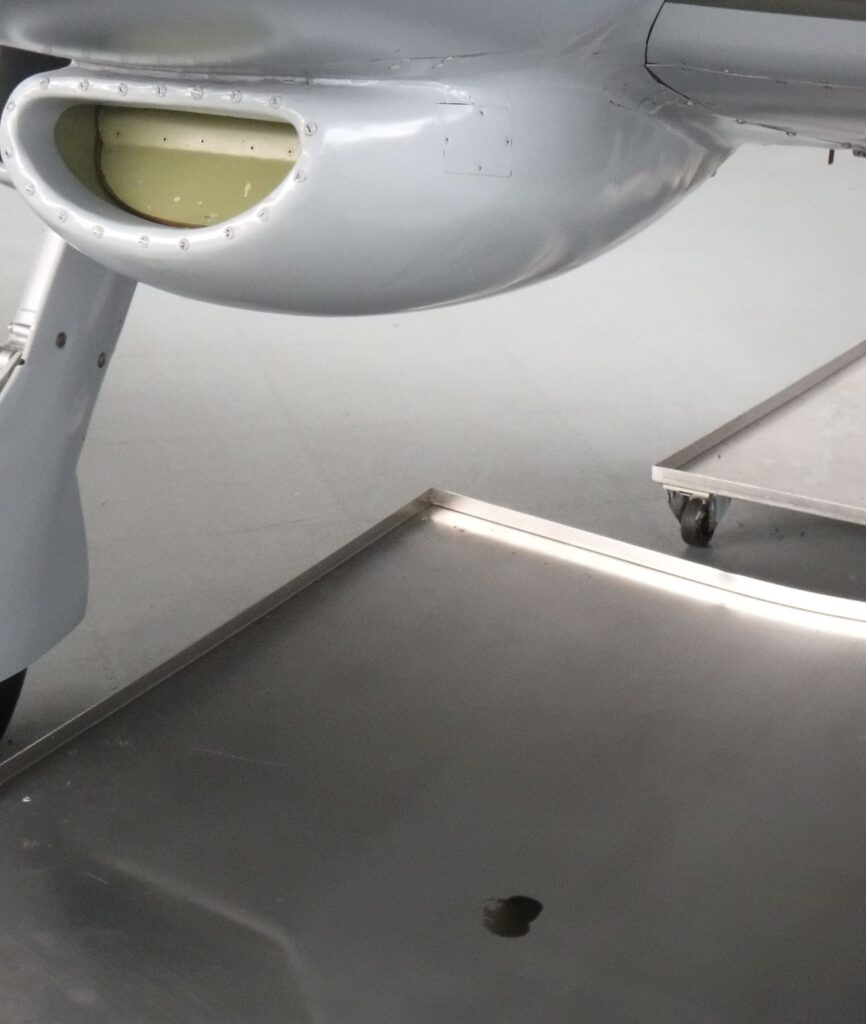
The Mk XVIII was introduced just after WWII, and this particular aircraft had a short stint with the RAF before being transferred to the Indian Air Force.
Not bad for an plane that’s over 75 years old
I take an inordinate amount of time to make my way through an aviation museum, and I did plenty of laps around Hangar 10’s display. Numerous times I lingered at the exit, only to begin yet another ‘one last look around’. There was something magnetic about being amongst such rare aircraft, particularly in their airworthy state. When I arrived I had played charades with the staff member on the ticket desk, trying to ask whether any of the aircraft would be flying over the coming weekend. He shook his head and said ‘Keine piloten‘. I knew it was a longshot, but to have seen these planes wheeled out onto the flightline at Heringsdorf would have been something else again.
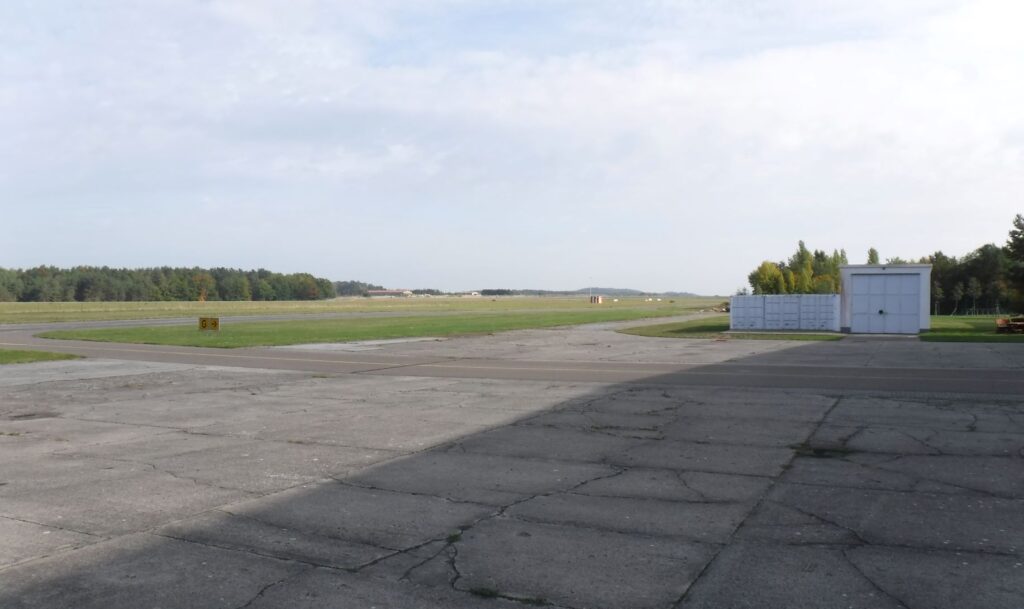
As per usual I had lost track of time in the Museum. When I finally walked out to the road I found I had just missed a bus, and the next wasn’t due for another hour. I decided to start walking, and wait for the service a few stops further on towards Ahlbeck. Keeping to the day’s theme of public transport stuff-ups (although this one was entirely my fault), I was between stops when the bus sailed past. I ended up walking back, and at one stage was berated by a tour bus driver who told me in no uncertain terms that walking on that particular stretch of narrow, forest-lined road was verboten. Since I was mid-way along the verboten bit my only options were to verboten my way back towards Zirchow, verboten my way forward towards Ahlbeck, or to cease verboten-ing and spend the rest of my life in the forest. I pressed on.
Zirchow is a little off the beaten track, but if you’re an historic aviation enthusiast, it’s well worth the effort. The mix of authentic, airworthy aircraft, along with the odd faithful reconstruction/replica, makes for an experience akin to stepping back in time to a hangar from the 1940’s. Now that’s something you don’t get to do every day.
1Aviation Trader Australia, 2022,1944 BF-109G-14
312 O’Clock High! Luftwaffe and Allied Air Forces Discussion Forum, 2022, Bf 109 WNr 462707
4Falcon’s Messerschmitt Bf 109 Hangar, 2022, BF 109 G-14
Visit the Hangar 10 homepage here
If you liked this post, you may also like National Aviation Museum Plovdiv, Exploring the Westwall
Do you have a particular interest in World War I, II and the Cold War? Check out my other blog Ghosts of War. If you enjoy military history, and want to know what it’s like to visit both significant and lesser-known wartime locations today, there’s something there for you.
Leave a Reply